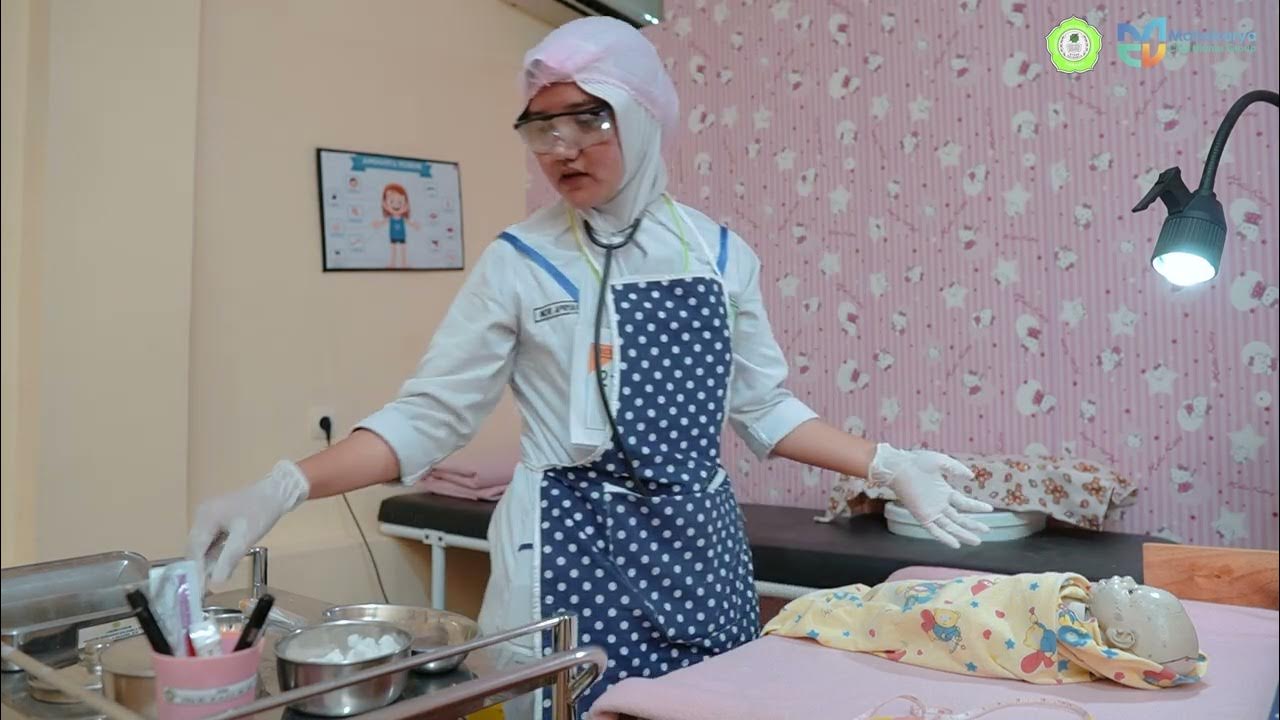Head and throat Examination
Summary
TLDRThis transcript outlines a thorough pediatric examination process, focusing on various health indicators like head size and shape, nasal patency, eye health, ear inspection, oral cavity checks, and more. The examination includes tests for conditions like scaphocephaly, strabismus, retinoblastoma, otitis, cleft lip, and tonsillitis. It emphasizes the importance of observing and palpating different areas of the body, as well as recognizing developmental milestones in children. The script also highlights the significance of timely diagnoses and intervention in childhood health, including the monitoring of dental development and the thyroid gland.
Takeaways
- 😀 Abnormal head size in children should be measured and recorded in percentile curves to assess health.
- 😀 A child's head shape should be observed, with premature closure of the sagittal suture leading to scaphocephaly.
- 😀 Fontanelles and sutures should be palpated in young babies, especially the anterior fontanelle, which closes between 12-18 months.
- 😀 Nasal patency should be checked, and difficulty in nasal breathing may indicate foreign bodies or anatomical issues.
- 😀 Chronic rhinitis can extend to the paranasal sinuses, particularly affecting the ethmoidal cells from birth.
- 😀 Eye examination should include checking for strabismus by observing the corneal reflex and the response to light.
- 😀 A motility test can distinguish between concomitant and paralytic strabismus, which requires early attention by 6 months.
- 😀 Retinoblastoma, a retinal tumor, can be indicated by a yellow appearance in the pupil, and scleral discoloration can signal osteogenesis imperfecta or jaundice.
- 😀 The ear examination involves checking the external ear, mastoid process, and inspecting the tympanic membrane for abnormalities like otitis media.
- 😀 Oral health in children is important, including monitoring the emergence of milk teeth and addressing issues like dummy carries caused by sugary bottle feeding.
Q & A
What should be observed during the examination of a child's head?
-The size and shape of the head should be observed. The head circumference must be measured and entered into the percentile curve. Any abnormal head size or shape, such as scaphocephaly (caused by premature closure of the sagittal suture), should be noted.
Why is palpating the fontanelle important in young babies?
-Palpating the fontanelle is crucial because it helps assess the level and tension, which can indicate underlying health issues. The fontanelle is particularly easy to palpate in young babies, and this examination should be done while the child is in an upright position without crying.
How is nasal patency assessed in children?
-Nasal patency is assessed by observing the child’s ability to breathe through the nose. Difficulty breathing may suggest the presence of foreign bodies or anatomical abnormalities, especially if there is a one-sided or bloody secretion.
What is ethmoiditis and how is it identified?
-Ethmoiditis is an inflammation of the ethmoidal cells of the paranasal sinuses, which are present from birth. It is identified by symptoms such as swollen eyelids and can be dangerous if not treated. This condition is commonly seen in infants.
What is the significance of examining the eyes for strabismus?
-Strabismus (misalignment of the eyes) should be identified early, preferably before the age of six months. The test involves using a light to observe any asymmetry in the corneal reflex. If an eye adjusts its position when covered, it indicates a strabismus.
What does the asymmetry in the corneal reflex suggest in a child?
-Asymmetry in the corneal reflex indicates strabismus. When one eye is covered, the uncovered eye may adjust its position, confirming a deviation in eye alignment, which needs to be clarified before the child reaches six months.
How is paralytic strabismus distinguished from concomitant strabismus?
-In concomitant strabismus, the deviation of the eyes remains the same in all directions. In paralytic strabismus, the deviation occurs only in the direction controlled by the affected muscle, such as the left rectus lateralis muscle.
What can the presence of a yellow pupil in a child indicate?
-A yellow pupil can be a sign of retinoblastoma, which is a retinal tumor. Early detection and intervention are crucial for managing this condition.
What should be noted when examining the external ear of a child?
-The shape and position of the ear in relation to the eyes should be observed. Swelling of the mastoid process may indicate mastoiditis. Deformities in the ear can also be linked to chromosomal abnormalities, such as in trisomy 21 syndrome.
Why is it important to examine the teeth in young children?
-The examination of teeth is important to identify early dental issues such as dummy carries caused by frequent bottle-feeding with sweetened liquids. Healthy milk teeth are essential for nutrition, jaw development, and keeping space for permanent teeth.
Outlines

This section is available to paid users only. Please upgrade to access this part.
Upgrade NowMindmap

This section is available to paid users only. Please upgrade to access this part.
Upgrade NowKeywords

This section is available to paid users only. Please upgrade to access this part.
Upgrade NowHighlights

This section is available to paid users only. Please upgrade to access this part.
Upgrade NowTranscripts

This section is available to paid users only. Please upgrade to access this part.
Upgrade NowBrowse More Related Video
5.0 / 5 (0 votes)





